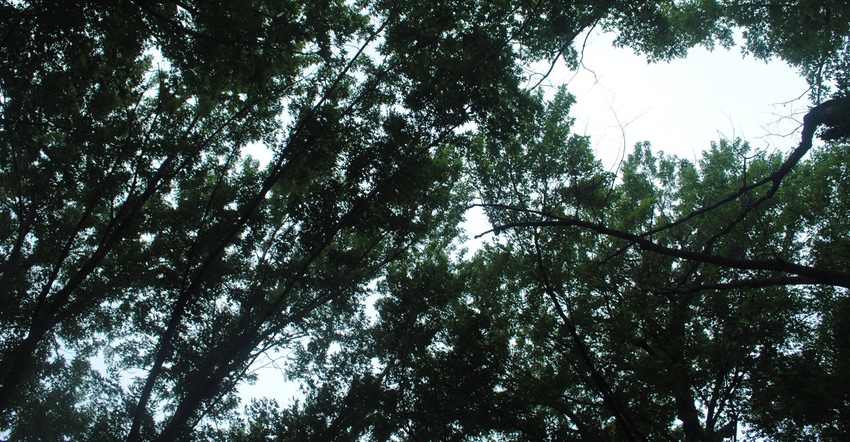
I have been fortunate enough to be along for the ride with some of my Nebraska Forest Service forester friends during champion tree measuring excursions in my neck of the woods. One such adventure took a group of tree enthusiasts deep into the rolling woodlands along the Missouri River, in search of what could have been a new state champion eastern red cedar.
Measuring the tree — which includes placing a measuring tape around the trunk at chest height to get an accurate circumference reading, as well as measuring the height and crown spread to come up with a point total — was a challenging enterprise.
The nominated tree specimen was growing out of the side of an embankment, with a stream flowing 25 feet below. In the end, this remote tree was not the state champion, but measured among the top five red cedars in Nebraska.
My state has at least one national champion tree, listed on the American Forest National Register of Champion Trees. An eastern cottonwood, which is the state tree of Nebraska, measures 450 inches in circumference, is 88 feet tall and has an average crown spread of 108 feet. It’s located in Gage County in southeast Nebraska. Crowned as national champion in 2013, it is one example of hundreds of champion trees spread out across the country out of hundreds of eligible tree species and varieties.
If you believe that you have a national or state champion tree on your farm, there are steps to determine if your tree is eligible. The species must be recognized as either native, nonnative and naturalized, or a recognized naturally occurring variety in the U.S., so hybrids, cultivars, ornamentals and unclassified varieties are excluded from consideration. Check the USDA Plants Database or the Integrated Taxonomic Information System for qualifying varieties.
To determine if your specimen tree has a chance at a championship, measure it yourself. Three measurements are needed to total the points for your tree. You need a trunk circumference or girth measurement at about 4½ feet above the midslope of the tree’s base, measured in inches.
Next, you need a height estimate measured in feet and a crown spread measurement in feet. You can check the National Register of Champion Trees or a state register of champions to see if your tree is a contender, and to understand how to take accurate measurements and add up the measurements to get your point total.
If you believe you may have a champion, use the online nomination form at americanforests.org to nominate your tree. You will need to take photos of the tree, upload them and attach them to the online nomination form before submitting the nomination.
American Forests will advise a champion trees state coordinator in your state to confirm the health, species identification and measurements of the tree to ensure these aspects of each nomination, and to ensure the credibility of those trees listed on the National Register. It is advised to contact your state champion trees coordinator at the time you submit your tree nomination to give them a heads-up on the nomination process.
If your tree is certified as a national champion tree or a co-champion, you will receive a certificate from American Forests. Trees that were nominated and crowned national champions must be reverified by state coordinators that they are still living every 10 years.
In addition, new tree measurements and photos need to be submitted, so the tree’s status can be reverified as a champion. If the trees are not reverified after 10 years, a new champion will be crowned in that category. Also, trees that are still standing, but are dead, are ineligible for the National Register.
For more information, contact the champion trees coordinator in your state to help with the nomination process.
About the Author(s)
You May Also Like






